In today’s A Lab Aloft, guest blogger Tara Ruttley, Ph.D., NASA International Space Station associate program scientist, shares her experience from the 2014 World Science Festival.
I think I’m finally recovering from the amazing whirlwind that was the World Science Festival. From May 28 to 31, NASA had the exciting opportunity to participate in the event held in New York City. The festival, created by physicist Brian Greene, is an annual city-wide series of events that include smaller panels, interactives, demonstrations and presentations, all with the goal of sharing fascinating and cutting-edge science with the public.
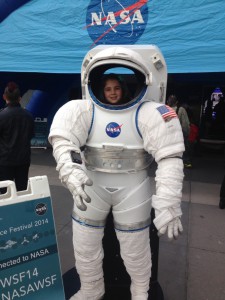
My role was to coordinate and present the science happening on the International Space Station (ISS) with attendees in a World Science Festival style. This means “Go Big!” The kinds of exchanges that happen in environments like this have dual benefits for the agency. The public gets informed about the work that NASA does—and we really hope they get inspired and motivated—and NASA gets to learn just what the public thinks about us, for better or worse.
When given the challenge last fall to prepare for NASA’s participation in the festival, the first thing I did was identify some of the most passionate, excited space station scientists. I then invited them to showcase their work among the many World Science Festival activities sprinkled throughout the week in June. Of course our very own International Space Station Program Science Office was ready to share our investigations with the masses. There were so many great researchers and experiments that came to mind that I wanted to share with the visitors to the event.
Considering the array of schedule constraints and correct alignment of the cosmos, I was finally able to put a team together to represent space station research at the event. I recruited space station fluid physicist Mark Weislogel from Portland State University, who talked with audiences about his wild findings on fluid behavior in microgravity. I also asked aerospace engineer Nancy Hall, who brought her drop tower out for public interaction from NASA’s Glenn Research Center in Ohio. Then I also recruited Alvar Saenz-Otero and his award-winning MIT SPHERES team, who had demonstration units used for the Zero Robotics: ISS Programing Challenge for the public to try out.
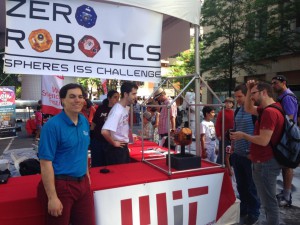
From NASA’s Human Research Program, Andrea Dunn attended and demonstrated the space station’s new Force Shoes investigation. Team members from NASA’s Human Research Program based at the agency’s Johnson Space Center in Houston showed visitors how liquid recycling happens in space. They explained the importance of hydration for astronauts and those of us here on Earth.
Speaking of NASA astronauts, Sandy Magnus, Mike Massimino, and Mike Hopkins made appearances to talk about their space science experience with eager listeners. The Associate Administrator for the Science Mission Directorate at NASA Headquarters, John Grunsfeld, also joined in to discuss the actual science behind the movie “Gravity.”
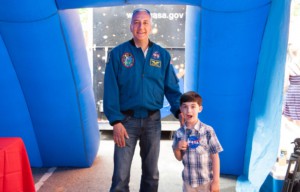
This was quite a unique series of events with an assortment of participants representing the research we have done, continue to do and plan to do for the next decade aboard the space station. As we scientists were celebrated for our love of discovery—BONUS!—we got to share that enthusiasm with a massive crowd. For self-proclaimed science geeks like me, it was utopia!
For months leading up to the big week, our space station teams were hard at work to deck out the NASA mobile exhibit to look like the inside of the space station. We also included displays of some of the most stunning science footage ever taken aboard the station. We really wanted the public to experience what the astronauts feel in orbit—Ok, I admit the addition of a microgravity component itself would have been really cool, if we could create such a thing. I believe we achieved our goal of conveying the importance of the types of science we do on station to advance both human exploration of space and to improve our lives on Earth.
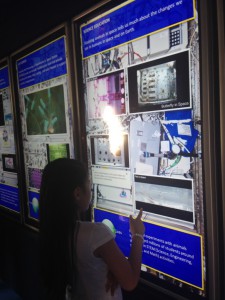
Once inside the exhibit, NASA scientists were on hand to answer questions from visitors like: What happens when we light fires in space? Why do astronauts lose bone mass at a rate equivalent to Earth-based osteoporosis? Why do we study fluid behaviors in space? Do fish get confused when swimming in space?
All of these questions can be answered along the same theme: we’re learning about new behaviors, relationships and processes we’ve never even discovered before on Earth. In so doing, we apply that knowledge to existing systems on Earth and in space to constantly improve our very existence. During the week of the World Science Festival, we must have answered hundreds of questions as we interacted with upwards of 150,000 people interested in space station science!
And, inevitably, yes, we did get the common question we’ve come to expect: how do you go to the bathroom in space? The NASA exhibit even came prepared with a demonstration unit of the Waste Management Center (WMC)—that is, a space potty! For display purposes only, of course.
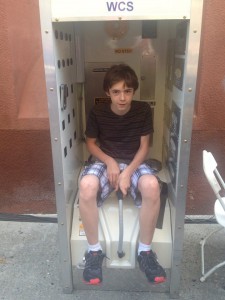
Potty talk aside, the public cares about the science we conduct on the space station. They ask many of the common questions surrounding science in space, and they also ask new questions, which leads us all to think about “what if…” ideas that we may just try out in space one day. One thing’s for certain, when we support science outreach events like these, the people we meet usually have as big an impact on us as we do on them. And for that, many thanks for your inspiration!
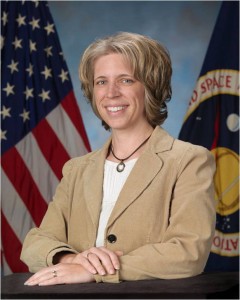
Tara Ruttley, Ph.D., is associate program scientist for the International Space Station at NASA’s Johnson Space Center in Houston. Ruttley previously served as the lead flight hardware engineer for the ISS Health Maintenance System and later for the ISS Human Research Facility. She has a Bachelor of Science in biology and a Master of Science in mechanical engineering from Colorado State University and a doctorate in neuroscience from the University of Texas Medical Branch. Ruttley has authored publications ranging from hardware design to neurological science and holds a U.S. utility patent.
